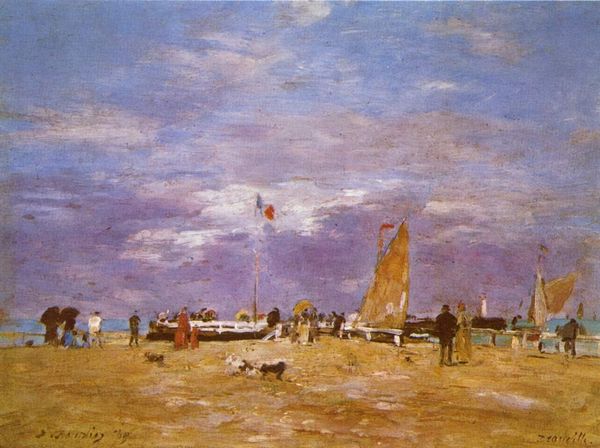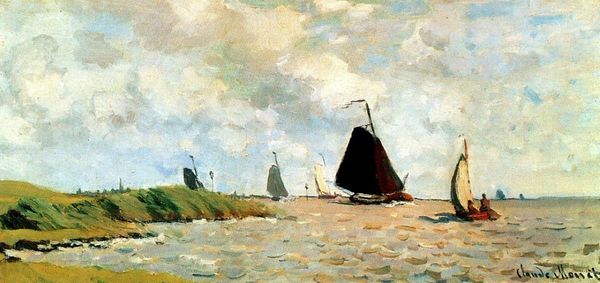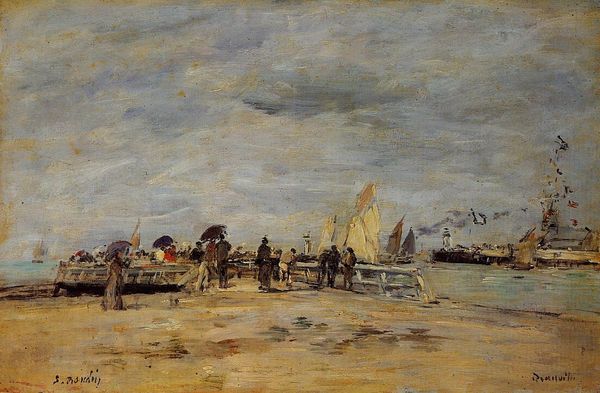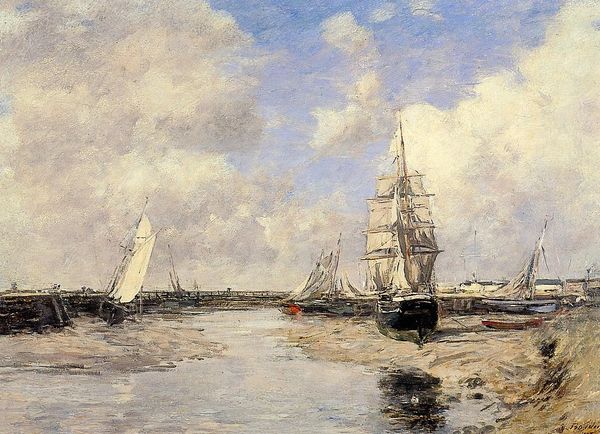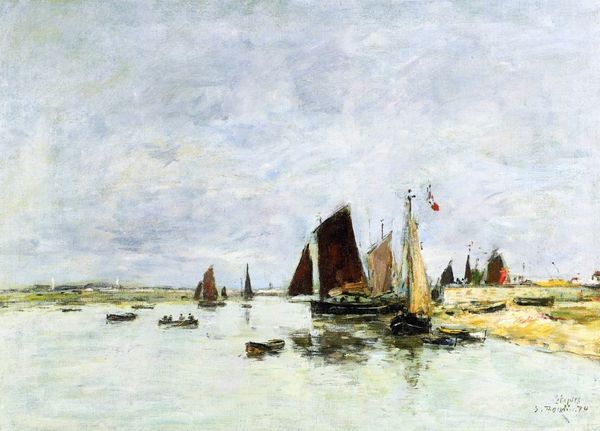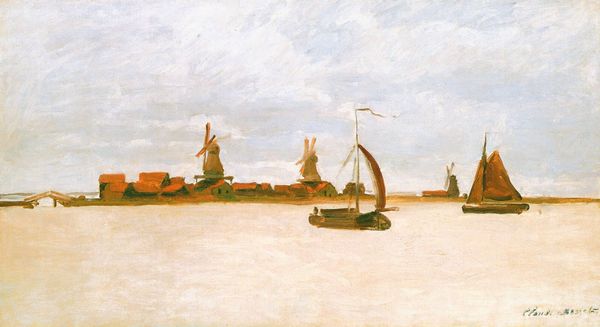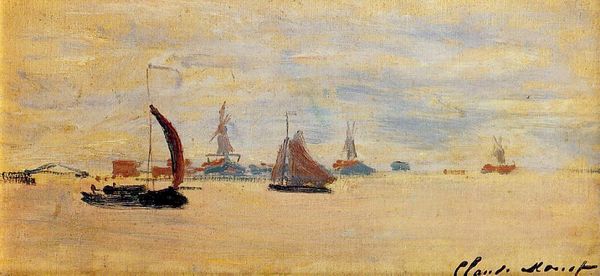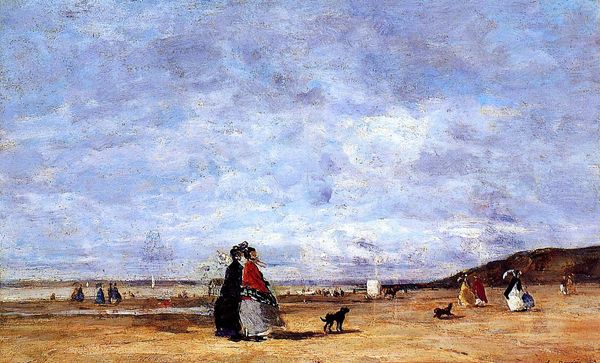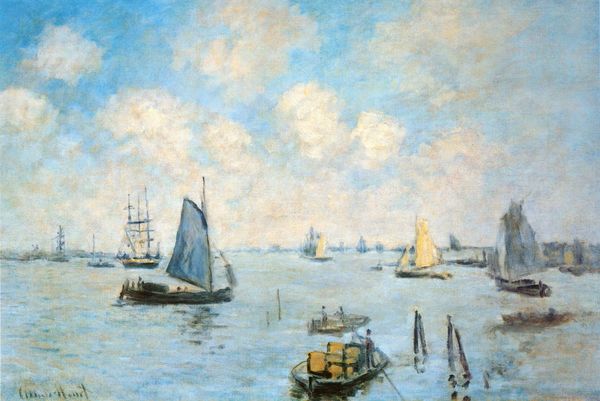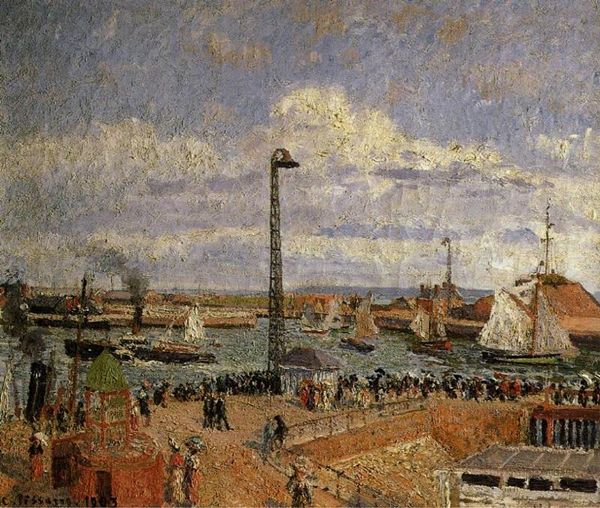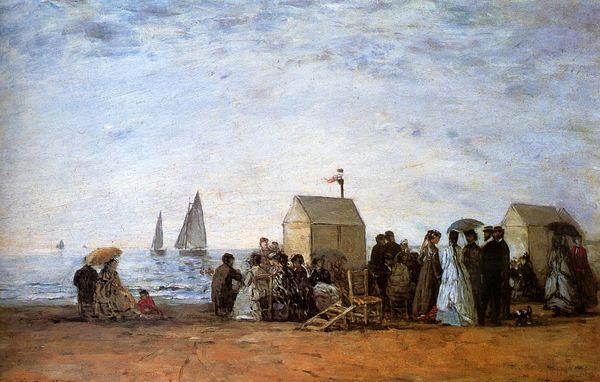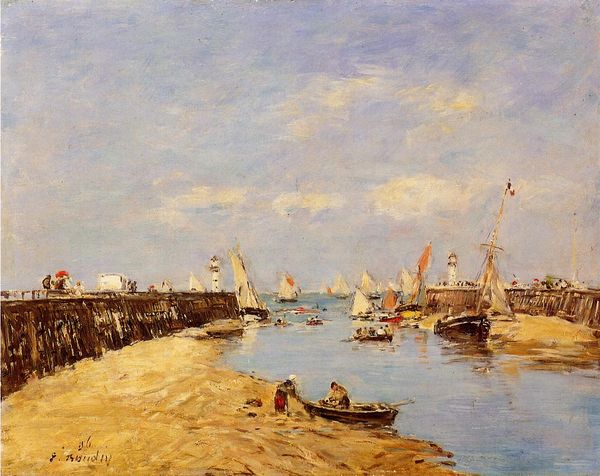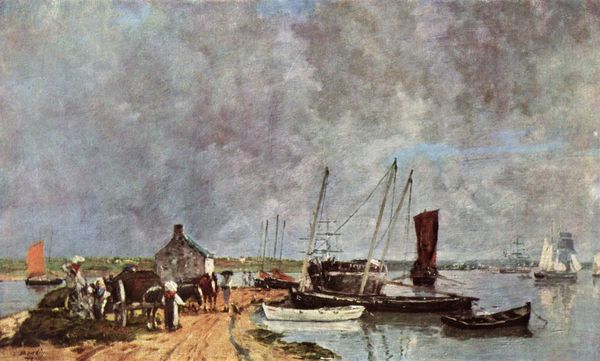
plein-air, oil-paint, impasto
#
impressionism
#
plein-air
#
oil-paint
#
landscape
#
impressionist landscape
#
oil painting
#
impasto
#
cityscape
#
genre-painting
Copyright: Public domain
Editor: Here we have Eugène Boudin’s "The Trouville Jetty," painted in 1867. It's an oil painting that really captures a specific moment with the boats, the figures on the beach. What's striking to me is the impasto - you can really see the layering of paint in the sky and the sea. What do you notice in this piece? Curator: Boudin’s "Trouville Jetty" is fascinating when viewed through a materialist lens. We have oil paint, of course, readily available in tubes by this point, which liberated artists to paint *en plein air*, but consider the subject too. Trouville, like many coastal towns, was experiencing a transformation driven by new technologies, specifically the railway, which enabled mass tourism and the development of seaside resorts for the bourgeoisie. The jetty itself, constructed to facilitate increased maritime traffic, points to expanding trade networks and the consumption of goods and leisure. Doesn't this shift in social structures reflected in Boudin's subject, intrigue you? Editor: That's an interesting point - the jetty itself as a symbol of accessibility and the rise of leisure. So, rather than just seeing pretty sailboats, we're actually seeing the material manifestation of a changing economy. Curator: Precisely! The materials are intertwined with the means of getting them to the canvas and what that meant for French society. Consider the clothing of the figures – the fabrics, dyes, the labour involved in their production - indicators of status and access to the burgeoning consumer culture. Even the "spontaneity" of the Impressionistic style hints at the accelerated pace of modern life, right? What would an artist focused on capturing such a scene by depicting the laborious clothing dying? Editor: Right, capturing the fashion industry by highlighting labor sounds time intensive! I see how even the fleeting, ‘impressionistic’ style is tied to the here and now of material and commercial shifts during the 19th Century. Curator: Exactly. Examining the artwork in relation to industry, consumption, and accessibility changes everything! Editor: I’ll definitely think about materials and socio-economic contexts differently from now on. Thanks!
Comments
No comments
Be the first to comment and join the conversation on the ultimate creative platform.
